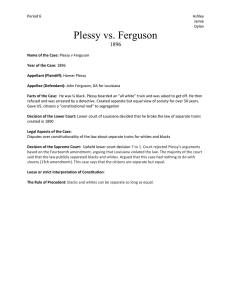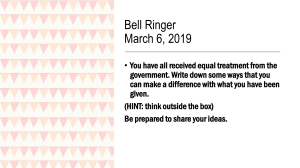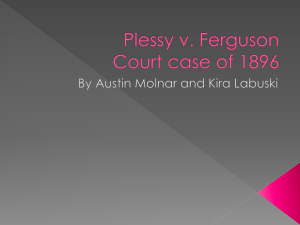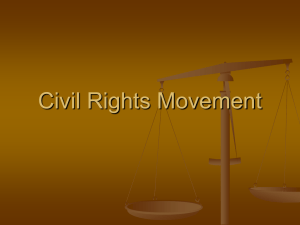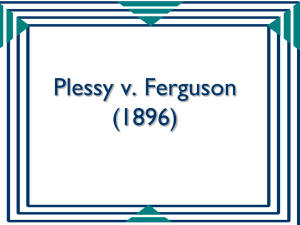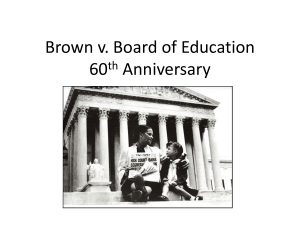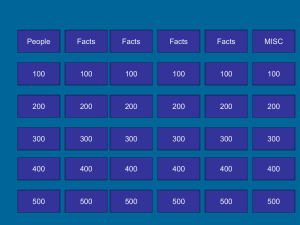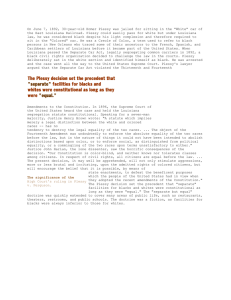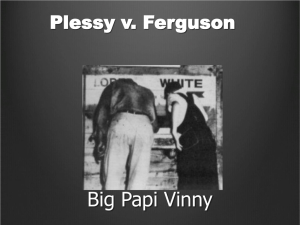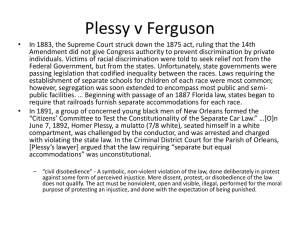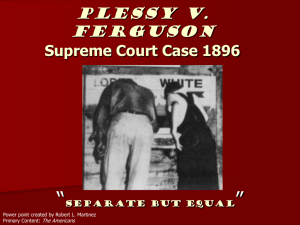Plessy v. Ferguson - Fairfield Public Schools
advertisement
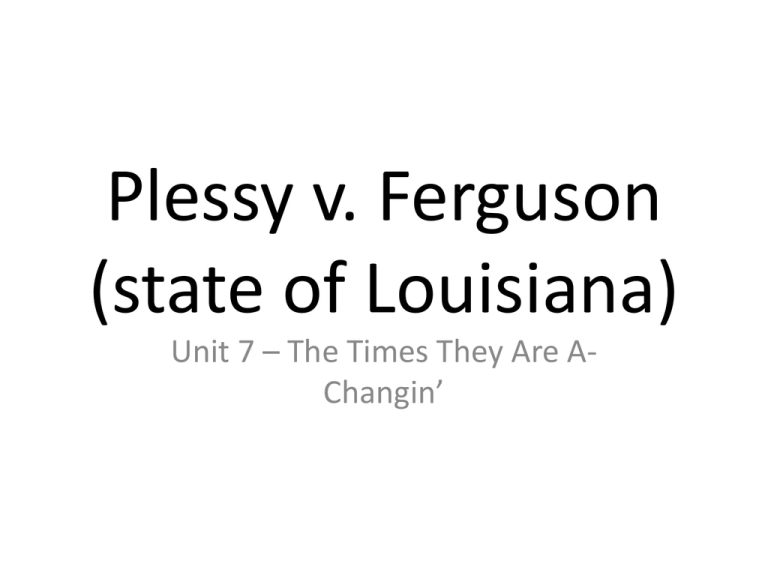
Plessy v. Ferguson (state of Louisiana) Unit 7 – The Times They Are AChangin’ •Plessy v. Ferguson 1896 court case set the policy of separate but equal through the 1950s Background: • In the 1890s Homer Plessy was an African American who had purchased a first-class ticket on a Louisiana train • When he tried to sit in the first-class car, he was arrested because Louisiana’s laws did not allow African Americans to ride in first class with whites Background •Plessy and his lawyers argued that this violated th the 14 Amendment’s guarantee of equal legal treatment The Court Ruling • The Supreme Court (the highest court in the country) ruled against Plessy, arguing that it was legal to force African Americans and whites to use separate facilities as long as the facilities were of equal quality • According to the Court, this was fair so long as “separate-but-equal” facilities were provided for African Americans The Judge Who Disagreed • John Mashall Harlan said: “In the eye of the law, there is in this country no superior, dominant [controlling], ruling class of citizens…Our constitution is color blind, and neither knows nor tolerates classes among citizens. In respect of civil rights, all citizens are equal before the law.”
